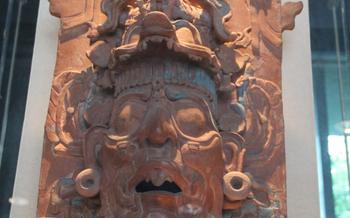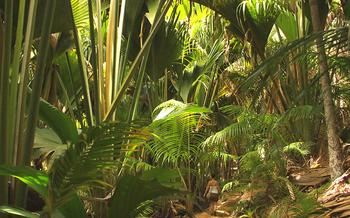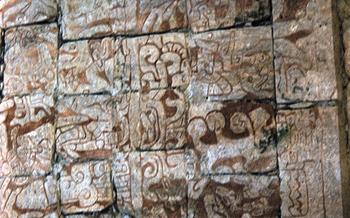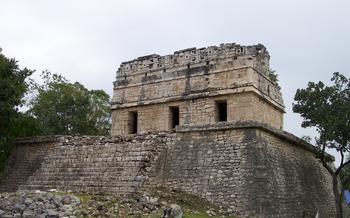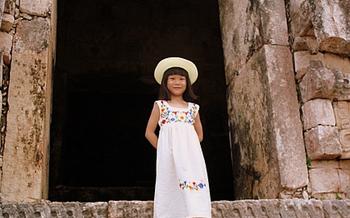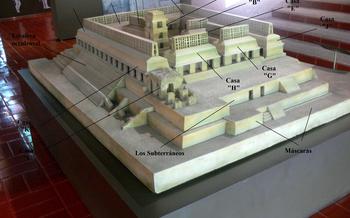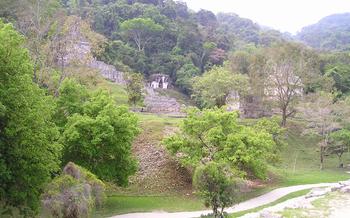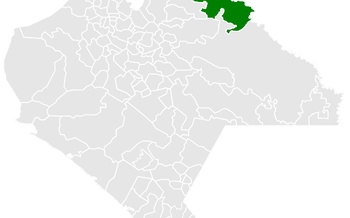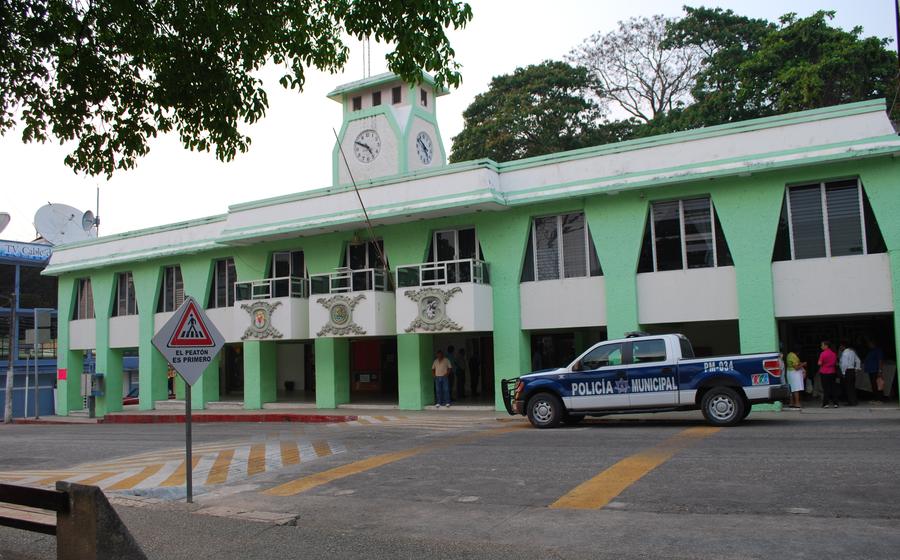
Museo de la Medicina Maya
- The Antiquity of Traditional Mayan Medicinal Practices
- Location and Accessibility: Finding the Museum
- Hours of Operation and Admission Fees
- Exhibits and Displays: A Journey Through Mayan Medicine
- Traditional Healing Methods: Unveiling Ancient Wisdom
- The Role of Plants in Mayan Medicine: Nature's Pharmacy
- The Human Body in Mayan Medicine: A Holistic Approach
- The Legacy of Mayan Medicine: Enduring Practices and Beliefs
- Cultural Significance and Symbolism: Beyond Practical Applications
- Collaboration and Exchange: Sharing Knowledge and Experience
- Challenges and Opportunities: Navigating the Modern World
- Events and Workshops: Engaging with Mayan Medicine
- Recommended Readings and Resources: Delving Deeper
- Insider Tip: Exploring Beyond the Museum
The Antiquity of Traditional Mayan Medicinal Practices
The Mayans possessed a sophisticated system of traditional medicine that has been practiced for centuries. Rooted in their profound understanding of the natural world and the human body, Mayan medicine emphasized holistic healing, focusing on the balance between physical, spiritual, and emotional well-being. Drawing from a rich repository of plant-based remedies, massage techniques, and spiritual rituals, Mayan healers aimed to restore harmony and vitality to the sick. The continuity of Mayan medical knowledge over time is a testament to its enduring efficacy, with many practices still employed in contemporary Mayan communities. The Museo de la Medicina Maya stands as a testament to the enduring legacy of Mayan medicine, preserving and promoting the cultural heritage of this ancient civilization.
Location and Accessibility: Finding the Museum
The Museo de la Medicina Maya is situated in the heart of Palenque, a vibrant city steeped in Mayan culture. The museum is conveniently located on Calle 5 de Febrero, a short walk from the bustling central plaza. Visitors can easily navigate to the museum by following the signs or asking for directions from friendly locals. Its proximity to other attractions, such as the Palenque Archaeological Zone and the Templo Mayor, makes it an ideal stop on a comprehensive tour of the city. For those with accessibility concerns, the museum is wheelchair accessible and offers designated parking spaces.
Hours of Operation and Admission Fees
The Museo de la Medicina Maya welcomes visitors from Tuesday to Sunday, offering a flexible schedule to accommodate diverse travel plans. During the week, the museum opens its doors from 9:00 AM to 5:00 PM, providing ample time to explore its exhibits and delve into the world of Mayan medicine. On weekends, the hours are slightly extended, with the museum remaining open until 6:00 PM, allowing visitors to immerse themselves in the museum's collection at a more leisurely pace.
Admission fees are structured to ensure accessibility while supporting the museum's ongoing preservation efforts. Adults can gain entry for a modest fee, while children and students receive discounted rates, making the museum an affordable destination for families and educational groups. Additionally, the museum offers concessions for seniors and visitors with disabilities, demonstrating its commitment to inclusivity.
Guided tours are available for those seeking a more in-depth exploration of Mayan medical practices. These tours, led by knowledgeable guides, provide a deeper understanding of the exhibits and artifacts, offering visitors a comprehensive journey through the history and significance of Mayan medicine. While the guided tours come with an additional cost, they are highly recommended for those who wish to maximize their experience and gain a profound appreciation for the museum's collection.
Exhibits and Displays: A Journey Through Mayan Medicine
Step into the realm of ancient healing practices as you explore the fascinating exhibits and displays at the Museo de la Medicina Maya. Witness the diverse array of artifacts, specimens, and interactive elements that bring to life the rich history and traditions of Mayan medicine. Discover the intricate instruments used by Mayan healers, including obsidian scalpels, ceramic vessels for preparing remedies, and elaborate headdresses adorned with medicinal plants. Learn about the medicinal properties of various plants, their preparation methods, and their significance in Mayan culture. Immerse yourself in the interactive exhibits that allow you to grind herbs, mix potions, and virtually experience the rituals and ceremonies that were integral to Mayan healing practices. The museum's multimedia presentations and educational materials provide in-depth insights into the beliefs, practices, and enduring legacy of Mayan medicine.
Traditional Healing Methods: Unveiling Ancient Wisdom
The ancient Mayans possessed a diverse repertoire of traditional healing methods that showcased their profound understanding of the human body and the natural world. Herbal remedies formed the cornerstone of their medical practices, with shamans and healers utilizing a vast array of plants for their therapeutic properties. Massage techniques were also employed to alleviate pain and promote relaxation. Additionally, spiritual practices played a crucial role in Mayan medicine, with rituals, ceremonies, and incantations believed to have healing powers. Shamans, respected figures in Mayan society, served as intermediaries between the physical and spiritual realms, guiding individuals on their path to wellness. The holistic approach of Mayan medicine, encompassing physical, emotional, and spiritual dimensions, reflects their deep reverence for the interconnectedness of life.
The Role of Plants in Mayan Medicine: Nature's Pharmacy
Mayan medicine relied heavily on the diverse flora of the region, with plants playing a central role in healing practices. The Mayans possessed a vast knowledge of medicinal plants and their properties, passed down through generations of healers. They developed intricate classification systems based on plant characteristics, habitats, and medicinal uses.
Specific plants were revered for their healing properties. For example, the bark of the ya'ax che' (green tree) was used to treat skin ailments, while the leaves of the xtabentún (tourmaline) were used for respiratory problems. The chacah (gumbo limbo) tree was valued for its resin, which was used to heal wounds and burns.
The Mayans also believed in the power of ixchel, a type of mistletoe, which they used to treat women's health issues. The balché tree (Lonchocarpus violaceus) was sacred to the Mayans, and its bark was used to make a ceremonial drink believed to have medicinal properties.
Traditional Mayan healers, known as ah-men, possessed a deep understanding of plant properties and their medicinal uses. They would often combine different plants to create complex remedies, taking into account the patient's individual needs and the specific ailment being treated.
The legacy of Mayan plant-based medicine continues today. Many modern pharmaceuticals have their roots in traditional Mayan remedies, and researchers are actively studying Mayan plants for their potential medicinal applications. The preservation and documentation of Mayan plant knowledge are crucial for ensuring the continuity of this ancient healing tradition.
The Human Body in Mayan Medicine: A Holistic Approach
The ancient Mayans held a holistic view of the human body, emphasizing its interconnectedness with the natural world. They believed that illness and disease were caused by imbalances or disruptions in the body's harmony with its surroundings. Mayan medicine focused on restoring this balance through various methods, including herbal remedies, massage techniques, and spiritual practices.
The Mayans believed that the body was composed of various elements, including blood, bones, flesh, and soul. They believed that the soul, or "wayil," was the vital force that animated the body and connected it to the spiritual realm. Illness was seen as a result of the soul becoming separated from the body or becoming unbalanced. Mayan healers sought to restore the soul's balance and harmony through rituals, ceremonies, and incantations.
The Mayans also believed that the body was closely connected to the environment. They believed that the health of the body was influenced by the cycles of the sun, the moon, and the stars, as well as by the plants and animals that surrounded them. Mayan healers often used herbs, minerals, and animal parts in their remedies, believing that these elements could help to restore the body's balance and harmony with nature.
The Legacy of Mayan Medicine: Enduring Practices and Beliefs
The legacy of Mayan medicine extends far beyond the confines of the Museo de la Medicina Maya. Its influence can be felt in contemporary healthcare practices throughout the region and beyond. Traditional Mayan healers are increasingly recognized and respected for their knowledge and expertise, and their practices are being integrated into modern healthcare systems. This integration is not merely a matter of adopting specific remedies or techniques but a recognition of the holistic and culturally sensitive approach that characterizes Mayan medicine. The World Health Organization (WHO) has played a significant role in promoting the integration of traditional medicine into healthcare systems, recognizing its potential to improve health outcomes and preserve cultural heritage.
The international community has also recognized the value of Mayan medicine. In 2017, UNESCO declared traditional Mayan medicine a Masterpiece of the Oral and Intangible Heritage of Humanity. This recognition highlights the importance of preserving and promoting Mayan medical knowledge and practices and ensuring their continued transmission to future generations.
Efforts are underway to revitalize and preserve Mayan medicinal traditions. This includes initiatives to document and research traditional knowledge, support Mayan healers, and promote the use of traditional remedies in healthcare. These efforts are vital to ensuring that the legacy of Mayan medicine continues to thrive and benefit future generations.
Cultural Significance and Symbolism: Beyond Practical Applications
Mayan medicine extends beyond its practical applications, deeply intertwining with the cultural and symbolic fabric of Mayan society. It is intrinsically connected to their religious beliefs, cosmological understanding, and everyday life, shaping their cultural identity and community values. Mayan medicine is not merely a collection of healing practices but a reflection of their worldview, where the human body, nature, and the spiritual realm are intricately interconnected. The use of plants, rituals, and ceremonies in Mayan medicine holds profound symbolic meanings, representing their reverence for the natural world and their belief in the interconnectedness of all living beings. Artistic representations of Mayan deities, healers, and medicinal plants further illustrate the cultural significance of medicine in Mayan society, showcasing their deep appreciation for the healing arts.
Collaboration and Exchange: Sharing Knowledge and Experience
Mayan medicine thrives not in isolation but through dynamic interactions and exchanges with contemporary healthcare practices. Recognizing the value of cross-cultural dialogue, initiatives and programs have emerged to bridge the gap between traditional healers and modern healthcare professionals. These collaborations facilitate knowledge sharing, mutual learning, and the integration of Mayan medical practices into broader healthcare systems.
Research and documentation play a pivotal role in preserving and disseminating Mayan medical knowledge. Collaborative research projects, conducted with respect for indigenous protocols and ethical considerations, contribute to the systematic documentation of traditional practices. This knowledge is vital for the preservation of cultural heritage, the development of evidence-based practices, and the integration of Mayan medicine into modern healthcare systems.
The exchange of knowledge and experience between Mayan healers and contemporary healthcare practitioners fosters mutual understanding and respect. Western healthcare professionals gain insights into the holistic and culturally grounded approach of Mayan medicine, while Mayan healers benefit from exposure to modern medical advancements. This cross-pollination of ideas and practices leads to innovative approaches to healthcare that honor indigenous wisdom while embracing contemporary scientific knowledge.
Challenges and Opportunities: Navigating the Modern World
The integration of Mayan medicine into the modern world presents both challenges and opportunities. One challenge is the impact of Western medicine and pharmaceuticals, which have become dominant in many regions. This has led to a decline in the use of traditional Mayan remedies and practices. Another challenge is the loss of traditional knowledge due to factors such as urbanization, language loss, and the aging of Mayan healers.
Despite these challenges, there are also opportunities for Mayan medicine to thrive in the modern world. One opportunity is the growing interest in traditional and complementary medicine. This has led to a renewed appreciation for Mayan medicine and its potential to contribute to modern healthcare. Another opportunity is the development of initiatives and programs that promote knowledge exchange and mutual learning between Mayan healers and contemporary healthcare professionals.
It is important to recognize the value of Mayan medicine and to respect the rights of indigenous peoples to maintain their traditional practices. By integrating Mayan medicine into mainstream healthcare systems and promoting cross-cultural dialogue, we can create a more inclusive and holistic approach to healthcare that benefits everyone.
Events and Workshops: Engaging with Mayan Medicine
Immerse yourself in the world of Mayan medicine through a variety of events, workshops, and demonstrations held at the Museo de la Medicina Maya. These interactive experiences provide a unique opportunity to learn from Mayan healers, participate in hands-on activities, and gain a deeper understanding of traditional healing practices.
Attend workshops on herbal remedies, massage techniques, or spiritual healing rituals. Learn how to identify and prepare medicinal plants, create your own herbal remedies, or experience the power of traditional Mayan massage. Participate in guided meditations or ceremonies led by Mayan healers, and discover the spiritual dimension of Mayan medicine.
Don't miss the special programs and festivals that showcase Mayan medicine and culture throughout the year. These events offer a vibrant immersion into the traditions and practices of the Maya, featuring demonstrations, exhibitions, and performances. Engage with Mayan healers, artisans, and community members, and experience the richness and diversity of Mayan culture firsthand.
These events and workshops not only provide a deeper understanding of Mayan medicine but also contribute to its preservation and revitalization. By participating in these programs, you become part of a global community dedicated to honoring and supporting indigenous knowledge and practices.
Recommended Readings and Resources: Delving Deeper
To delve deeper into the fascinating world of Mayan medicine, a wealth of resources awaits you. For a comprehensive overview, consider reading "Maya Medicine: Traditional Healing in Yucatán" by Dr. Mercedes de la Garza and Dr. William J. Folan. This book offers a detailed exploration of Mayan medical practices, their historical roots, and their relevance in contemporary society.
For a more personal perspective, "Healers from the Rainforest: The Maya Way of Medicine" by Rosita Arvigo and Dr. Bruce E. Holmstedt provides firsthand accounts from traditional Mayan healers, sharing their insights into the healing power of plants and rituals.
Online resources also offer valuable information. The website of the Museo de la Medicina Maya (www.museodemedicinamaya.org) features extensive articles, videos, and interactive exhibits that allow you to explore Mayan medicine from the comfort of your home.
Remember, when engaging with indigenous knowledge, it is essential to approach it with respect and humility. Always seek permission before conducting research or sharing information, and ensure that you are contributing to the preservation and promotion of Mayan medical traditions in a responsible and ethical manner.
Insider Tip: Exploring Beyond the Museum
Venturing beyond the confines of the Museo de la Medicina Maya unveils a treasure trove of opportunities to delve deeper into the world of Mayan medicine. Immerse yourself in the vibrant local markets, where vendors proudly display an array of traditional herbal remedies and ingredients. Engage with the knowledgeable Mayan healers who generously share their wisdom and expertise, offering a glimpse into the living legacy of Mayan medicine. Remember to approach these interactions with respect and humility, honoring the cultural traditions and customs that shape this ancient practice.
